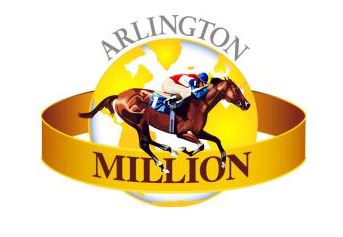
The eighth running of the Arlington Million (G1), held 30 years ago this month, remains one of the more memorable editions in race history for two primary reasons. First and foremost is that it wasn’t held at Arlington at all but at Woodbine outside Toronto, the only such occurrence in race history.
After local fans witnessed three Millions from temporary structures following Arlington’s disastrous grandstand fire in 1985, construction on the new facility was well underway in late 1987. However, that necessitated finding a one-year home for the track’s signature event for the following summer as the new building would not be ready until June 1989.
Arlington owner Dick Duchossois noted three factors went into the decision. He told the Chicago Tribune:
“Selecting the best site to enhance the Thoroughbred racing industry in North America, picking the best site for the race itself (and) choosing the most convenient site for the fans who have supported the first million-dollar Thoroughbred race in remarkable fashion since its inception in 1981.”
The deciding factor in choosing Woodbine as a host site over Keeneland, which also sought the race, was the former’s ability to accommodate crowds in excess of 30,000, the Tribune reported. Course configuration also played a role. While Woodbine could card races over 1 1/4 miles, choosing Keeneland would have forced the Million to be run at an alternate distance.
Duchossois’ desire for a larger facility unfortunately overstated market demand as a mere 18,300 (according to the Tribune) were on hand at Woodbine on August 20, 1988. The choice of Woodbine, well known to European horsemen being the host of the Canadian International (G1), arguably paid off in a more significant respect as foreign representation for the race was up substantially over the previous year when domestic stars like Manila, Theatrical, and Sharrood virtually scared away any would-be contenders from Europe.
The 1988 Million is also remembered for producing the greatest upset in race history when French invader Mill Native, trained by Andre Fabre and ridden by American ex-pat Cash Asmussen, defeated an outstanding field in course-record time of 2:00. The second longest shot on the board, Mill Native paid $83.20.
Mill Native’s record was obviously unimposing at first glance, though the gray son of Exclusive Native was consistent. After dropping his season opener, he entered the Million on a three-race win streak. His signature victories were the Prix de Chemin du Fer du Nord at Chantilly and Prix Messidor at Maisons-Laffitte, both Group 3s over a mile. A step-up to 1 1/4 miles never proved to be an issue.
“A mile and a quarter here is like a stiff mile over there,” Asmussen told the Tribune.
This retrospective of the 1988 Million cannot be complete without marveling at the horseflesh that crossed the wire behind Mill Native. Here’s a brief synopsis of the rest of the field in order of finish.
Equalize (2nd) — Also a gray, he won nine graded stakes during his career including the United Nations H. (G1) prior to the Million and the third running of the Early Times Turf Classic (G3) at Churchill Downs in 1989.
Sunshine Forever (3rd) — A supplemental entry and one of only two three-year-olds in the race, he was sent off as the second choice following earlier wins in the Hill Prince (G3) and Lexington (G2) at Belmont. He later won the Man o’ War (G1), Turf Classic (G1), and Washington D.C. International (G1), and finished second in the Breeders’ Cup Turf (G1). Voted champion turf male of 1988.
Media Starguest (4th) — The longest shot on the board at 41-1, his biggest win was the Earl of Sefton (G3) at Newmarket.
Roi Normand (5th) — Bobby Frankel-trained longshot turned a unique double winning the Ark-La-Tex H. (G3) at Louisiana Downs on dirt and the Sunset H. (G1) at Hollywood Park on turf prior to the Million.
Most Welcome (6th) — Notably the runner-up in the Epsom Derby (G1) and Champion Stakes (G1) at Newmarket in 1987. Won the Lockinge Stakes (G2) and placed in the Breeders’ Cup Mile (G1) in 1989.
Great Communicator (7th) — Leading California-based hopeful had won the San Marcos H. (G2), San Luis Obispo H. (G2), San Juan Capistrano H. (G1), and Golden Gate H. (G2) before the Million. Later upset Sunshine Forever in the Breeders’ Cup Turf at 12-1 and also took the Hollywood Turf Cup (G1) and 1989 Hollywood Turf (G1).
Something True (8th) — One of the lesser lights in the field, his signature victory was in the Grand Prix d’Evry (G2).
Anka Germania (9th) — The best finisher among three mares in the field, she was a seven-time graded stakes winner, including the Black Helen H. (G2) at Hialeah and the Sword Dancer H. (G1) at Belmont over Sunshine Forever prior to the Million.
Triptych (10th) — The 5-2 favorite in the field, she was one of the outstanding race mares of her era in Europe. She won or placed in 23 Group 1 events, with victories in the Coronation Cup at Epsom (twice), Champion Stakes at Newmarket (twice), Irish 2000 Guineas, International at York, Prix Ganay, Phoenix [Irish] Champion, and Prix Marcel Boussac.
“She was having trouble with the turns because she couldn’t handle the ground,” jockey Gary Stevens told the Tribune. “It was too hard for her.”
Deputy Governor (11th) — Neil Drysdale trainee preceded his Million appearance with a victory over 1989 Million winner and champion Steinlen in the John Henry H. (G1) at Hollywood and later the Eddie Read H. (G1) at Del Mar.
Yankee Affair (12th) — Tuned up for the Million with five stakes wins in 1988, including the second running of the Early Times Turf Classic and a course-record performance in the King Edward Gold Cup (G3) at Woodbine. Hit his best stride in 1989 winning the Turf Classic at Belmont, Man o’ War, and United Nations.
Carotene (13th) — A Sovereign Award winner over three seasons, she captured the 1986 Breeders’ Stakes, third leg of the Canadian Triple Crown, and later the 1987 Yellow Ribbon Invitational (G1), and 1988 Pan American H. (G1). Placed in the San Juan Capistrano, Sword Dancer, and King Edward Gold Cup earlier in the 1988 season.
Regal Classic (14th) — Canada’s champion juvenile colt and Breeders’ Cup Juvenile (G1) runner-up in 1987, he entered the Million with a second-place effort in the Queen’s Plate followed by a win in the Prince of Wales Stakes at Fort Erie.



